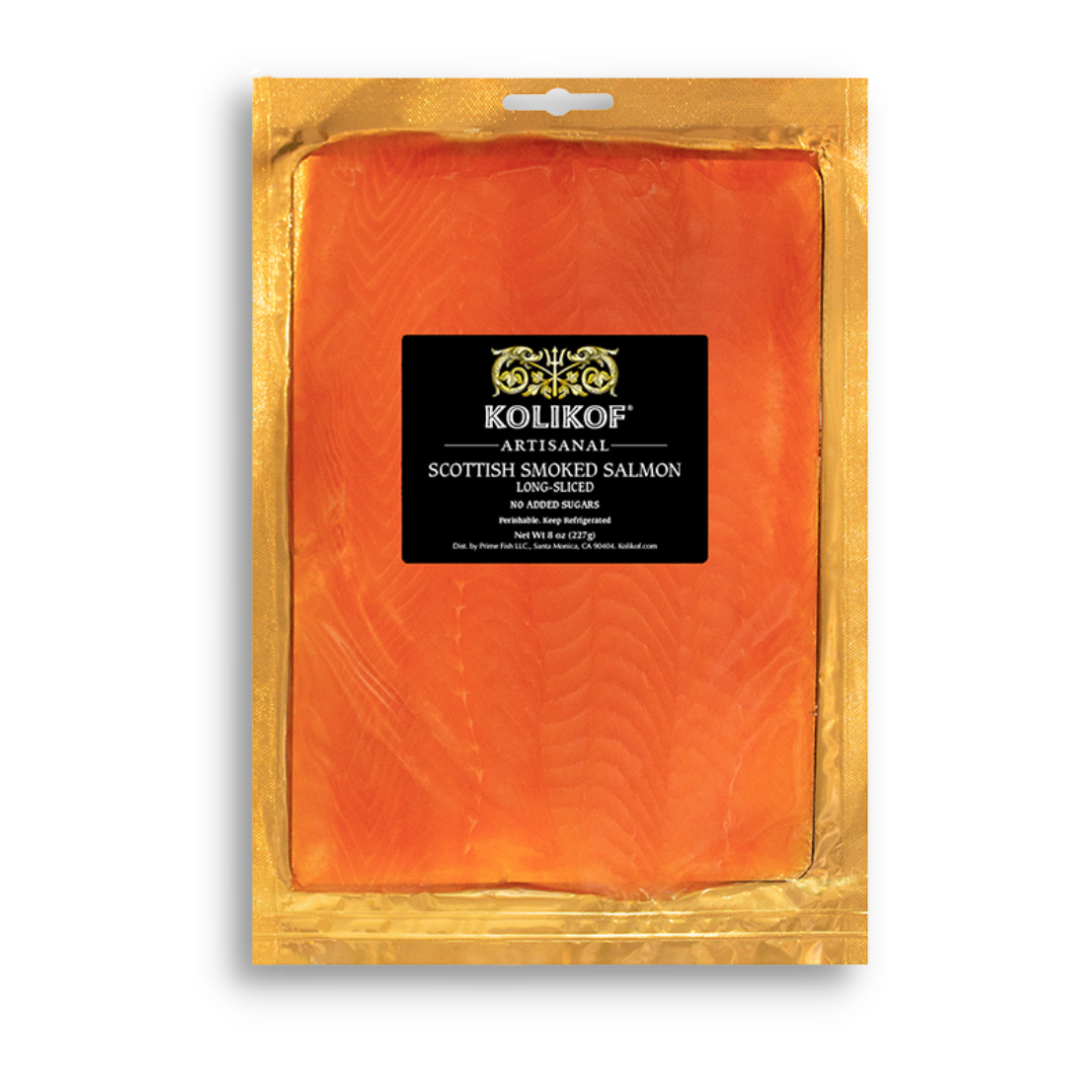Caviar vs. Roe: What is the Difference?
Both caviar and roe are tasty food products that come from fish, but despite common belief, they aren’t the same. Keep reading to learn the differences between caviar and roe, so you can select the right one for your next event.
What is Caviar?
Caviar is unfertilized fish eggs, coming from certain types of fish, namely breeds of sturgeon. Caviar are small round eggs, and the color can vary depending on the type and age of the sturgeon the caviar comes from.
Sturgeon fish are native to the Mediterranean and Caspian Sea, so most caviar is sourced from these regions. All caviar undergoes a salt curing process before reaching the consumer’s table.
What is Roe Fish?
Roe are unfertilized egg masses from any marine animal, meaning roe could come from salmon, shrimp, lobsters, or scallops. Salmon roe is the most common type of fish roe, sometimes called Ikura, also known as Alaskan Salmon Roe. Capelin roe, also called masago, is the next most popular type.
Roe, while they are still small round eggs, because they come from a wide variety of creatures, can vary widely in size, color, and taste.
Because roe can come from any marine creature, it is sourced from around the world. Roe can be cured prior to consumption, but it doesn’t have to be.
While roe can be tasty, especially in certain recipes, it is not held to the same quality standards as caviar and is therefore not considered a luxury food item.

Are Caviar and Roe the Same Thing?
Technically, roe is a broader term and category for fish eggs, while caviar is a more specific category only applying to sturgeon eggs, but they are both fish eggs. Roe are just fish eggs that come from any marine animal, while caviar only comes from sturgeon.
The only other difference is that per the Food and Drug Administration (FDA), any product that is NOT salt treated cannot be called caviar. Once a fish egg is salted, it can be called either caviar or roe in the eyes of the government.
Because the rules are a bit arduous, it is common to find products labeled “trout caviar” or “salmon caviar,” but know in both cases that these are technically roe, but they can legally be called caviar…it just isn’t quite the same quality or flavor profile as true caviar.
True caviar only comes from sturgeon fish. Any other fish eggs are technically roe, though the distinction is fading these days.
Do Caviar and Roe Taste Different?
Caviar, if it is true caviar, will taste much different than a roe. Remember, roe can come from a variety of animals, and for this reason, it is hard to discuss the exact flavors you will experience as you taste roe. In general, roe is much fishier and salty-tasting than caviar.
True caviar from a sturgeon will have a buttery and nutty flavor that makes it practically melt in your mouth, something you won’t experience with fish roe.
How Can You Tell if You Are Getting Real Caviar?
Unfortunately, with the rise in popularity of caviar, many restaurants have begun offering caviar dishes that don’t really contain real caviar. Sometimes, they use fish roe, and call it caviar to deceive guests into thinking they are getting the real deal.
In these cases, the most common way to tell whether or not you are getting true caviar is by the price. Caviar carries a much higher price tag than fish roe, and this will be reflected in the price of the dish.
But if you still aren’t sure, ask the server where the caviar comes from, or what type of fish it is. Because true caviar only comes from sturgeon, if they answer anything other than a breed of sturgeon, then you are eating roe, not caviar.
Don’t want to risk being deceived by a restaurant? Order your own real caviar directly to your door from an online shop like Kolikof Caviar and Gourmet.
When to Use Caviar vs When to Use Roe
Caviar is the more luxurious of the two fish-egg types, and they should always be used for upscale events when you plan to serve appetizers. Not only does caviar hold its form better than most types of roe, but they are the product that upscale guests are expecting to see—roe isn’t going to cut it. Plus, caviar has a better flavor than roe when served on its own or as the featured ingredient of a dish.
If you are doing a caviar tasting or a caviar and champagne event, then caviar is a necessity.
But, for those making sushi, a poke bowl, or a salmon lox bagel where fish eggs are only one of many ingredients, your guests won’t notice if you swap the caviar for roe, and you’ll save a little money too.
Where to Buy Caviar?
While some grocery stores carry caviar, you are better off ordering caviar online. Not only will you have your choice, but you can also get in-depth information about the mail order caviar before you buy.
Kolikof Caviar and Gourmet is one of the best, with a wide variety of caviar to choose from. Whether you need Imperial 000 Caviar or some more affordable premium sturgeon caviar, Kolikof has you covered.
Plus, they have many accessories, like a caviar server, and caviar gift sets that make them the best one-stop shop for all things caviar.









